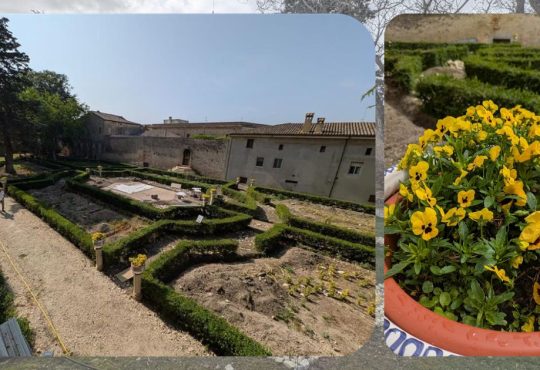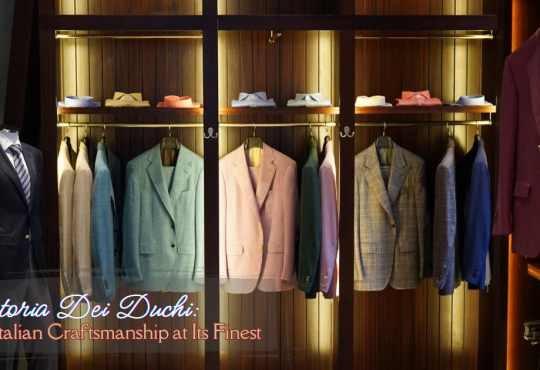Situated in Hebei Province, amid the enduring echoes of China’s ancient stone-carving heritage in Quyang’s mountains, lives a sculptor with over twenty years devoted to advancing marble sculpture. Cui Xiao Gang (born August 15, 1980) stands out as more than a craftsman—his vision weaves cultural narratives and transforms the experience of sculpture in both public and sacred spaces.
Over the past two decades, Cui has become one of his generation’s most respected artists in marble sculpture. Renowned for his precise technique, spiritual sensitivity, and deep connection to his material, he has created remarkable works for clients around the world—from tranquil European gardens to cutting-edge corporate campuses in China and expansive cultural venues in Korea. Grounded in tradition and driven by innovation, his artistic journey is now poised for broader international recognition.
A Sculptor Shaped by Legacy and Passion
Cui’s story begins in the historical town of Quyang, long recognized as a cradle of Chinese sculpture. Born into a family of artisans, Cui was immersed in stone carving from an early age. His father and uncle, both accomplished craftsmen, became his first mentors. Through hours of hands-on practice in their workshop, Cui quickly moved beyond imitation, developing a rare sensitivity to form, balance, and material.
By the time most children were still learning to write, Cui was already experimenting with sketching and modeling. He showed an intuitive grasp of two-dimensional line work and three-dimensional spatial understanding, which made it clear that his affinity for sculpture was more than just inherited—it was deeply ingrained in his nature. This early start gave him a solid foundation, and from there, he committed himself to a lifetime of refinement and learning.
Stone carving is not merely a learned skill but a dialogue passed down through generations. Each slab is believed to hold its voice—silent, yet resonant, waiting patiently to be uncovered. The sculptor’s role is not to impose, but to listen—and in listening, to reveal something meaningful through the chisel’s touch.
From Humble Apprentice to Passionate Artisan
Cui Xiao Gang’s artistic philosophy is built on dedication and the continuous pursuit of mastery. Rather than being satisfied with traditional methods, he has spent years studying diverse techniques, modern tools, and international styles. His process is one of immersion—blending Eastern philosophical ideas of harmony and nature with the structural clarity of Western sculpture.
Whether sculpting life-size human figures, ornamental fountains, or abstract forms, Cui combines technical precision with emotional resonance. Each curve, angle, and polished surface is intentional, serving aesthetic beauty and symbolic depth.
Cui’s approach to carving is also deeply introspective. He views the act not just as physical labor, but as a meditative process where the artist and the stone meet in dialogue. He has written and spoken about this “silent conversation” with marble—how each fissure, color variation, and grain pattern guides the artist’s hand.
Marble as Muse
Of all carving materials, marble remains Cui’s most cherished medium. He has devoted years to understanding its geological formation, mineral composition, and tactile qualities. He often compares marble to living skin—durable and delicate, responsive to light and time.
What sets Cui apart is his scientific knowledge paired with artistic intuition. He carefully selects each marble block, often traveling across China and abroad to inspect quarries. He studies how each piece reacts to temperature, how it refracts light, and how it can convey emotion. This commitment to material quality reflects his belief that only the finest stone can support the weight of artistic vision.
Marble isn’t seen merely as a medium—it’s treated like a creative partner. The stone already tells its own story; the sculptor’s role is to give it a clearer voice.
His sculpting techniques vary depending on the characteristics of each marble type. For harder stones, he uses a combination of traditional chisels and precision tools. For more translucent marbles, he adopts subtle polishing methods to highlight light play, often resulting in pieces that seem to glow from within.
Notable Works and International Recognition
Over the years, Cui Xiao Gang has completed an impressive portfolio of works across Asia and Europe. Every project showcases a mastery of technique paired with refined adaptability, shaping his aesthetic to resonate with diverse cultural narratives and environmental settings.
Huawei Headquarters, Shenzhen, China
One of Cui’s most recognized contributions is a series of sculptures at the Huawei corporate campus in Shenzhen. These include a graceful standing female figure and a reclining figure in a hammock, both carved from locally sourced marble. These sculptures embody balance, serenity, and subtle dynamism and serve as focal points within the modern architecture of the high-tech facility.
These works are more than just decorative—they offer employees and visitors a moment of calm reflection amid a fast-paced technological environment. The juxtaposition of organic form with corporate space illustrates Cui’s talent for integrating art into the rhythm of daily life.
The First Garden, Paju City, South Korea
Cui’s work also features prominently in The First Garden in Paju, South Korea—a cultural complex that spans 33,000 square meters and has 23 themed sections. His contribution includes several large-scale sculptures and water features designed to harmonize with the garden’s diverse floral and architectural motifs.
Here, he embraced a more whimsical and romantic style, experimenting with playful lines and naturalistic themes. His fountains, in particular, highlight his ability to incorporate movement and sound into static stone forms, further enhancing the immersive experience of the garden.
Parrocchia S. Maria Assunta in Cielo, Avellino, Italy
His rare gift for evoking sacred emotion with restraint—eschewing lavish ornamentation in favor of quiet reverence—has garnered praise from clergy and parishioners. Many regard his sculptures not merely as beautiful adornments, but as deeply contemplative presences that invite stillness, reflection, and spiritual intimacy. Cui’s artistry has quietly threaded its way into the sacred heart of Europe, leaving a marble whisper in the chapels of Italy.
At the Parrocchia S. Maria Assunta in Cielo in Avellino, his hands gave rise to altarpieces and symbolic carvings that seem to breathe with devotion—sculptural hymns that echo the church’s architectural rhythm and invite contemplation through stone. These works demonstrate his adaptability and respect for spiritual traditions, blending Renaissance influence with his minimalist clarity.
A distinctive visual language has emerged, striking a rare balance between delicacy and monumentality. Subtle details coexist with commanding forms to create a quietly powerful presence.
Cui Xiao Gang at the Giardino Ducale Sorricchio, Atri (2025)
In what may be his most prestigious European engagement to date, Cui Xiao Gang is preparing a series of marble sculptures for the Giardino Ducale Nicola e Luigi Sorricchio in Atri, Italy, to be unveiled in 2025. This historic garden, known for its architectural and archaeological significance, will feature Cui’s works as part of a new cultural initiative to spotlight international sculptors.
This marks a symbolic full circle in Cui’s career, placing his art within a centuries-old Italian setting, alongside sculptures that withstood time and history. His pieces for the garden are said to include a blend of allegorical and natural forms, emphasizing human connection to nature and time.
The Future of Stone Carving, Reimagined
Although Cui Xiao Gang has already carved out an impressive legacy in marble sculpture, his vision extends far beyond what has already been accomplished. Never one to rest on tradition alone, Cui is passionately invested in shaping the future of stone carving as an art form and a dynamic, evolving language of expression. In Quyang, he plays a vital mentorship role to emerging artists, encouraging them not only to master the foundations of the craft but to push boundaries. For Cui, the future lies in the delicate balance between reverence for tradition and fearless innovation. He advocates for a new generation of sculptors who aren’t afraid to blend time-honored techniques with contemporary experimentation.
Cui is also deeply committed to environmental responsibility in his practice. In an industry often criticized for its ecological footprint, he stands out as a vocal proponent of sustainable sourcing and mindful quarrying. He champions efforts to minimize waste, recycle off-cuts, and select materials with an eye toward their environmental and cultural impact. This commitment to sustainability is not just a logistical choice, but an ethical one, rooted in his belief that the material’s integrity should mirror the artist’s integrity.
Looking ahead, Cui is setting his sights on collaborative ventures that weave sculpture more seamlessly into everyday life. He’s in active dialogue with architects, interior designers, and cultural institutions to explore how sculpture can move beyond the gallery pedestal and become part of the living fabric of our surroundings. His vision? To create immersive, sculptural environments where art becomes something people don’t just look at, but live with—spaces that breathe with light, shadow, movement, and human interaction. Whether it’s a quiet garden, a bustling urban plaza, or an intimate interior, Cui imagines a world where sculpture enhances the human experience in both form and spirit.
Cui is also preparing a book that offers an in-depth look into his creative process to ensure that this evolving philosophy endures. More than just a catalog of past works, the publication will feature reflective essays, technical notes, visual studies, and behind-the-scenes glimpses into his studio life. It’s both a documentation of his journey and a guide for future sculptors seeking to understand the heart, hand, and mind behind each chisel mark. Through this, Cui hopes to leave behind more than just beautiful objects—he aims to pass on a way of thinking, seeing, and carving to inspire future generations.
The Sculptor Who Listens to Stone
Cui Xiao Gang stands at a unique crossroads of art, culture, and craftsmanship. His life’s work reflects a mastery of technique and a profound understanding of sculpture’s role in shaping human emotion, environment, and history. Through marble, he sculpts more than figures—he sculpts meaning, memory, and presence.
As his works continue to appear in iconic locations worldwide, Cui remains rooted in the same values that defined his beginnings: respect for nature, passion for learning, and the unyielding pursuit of beauty.
Stone carving is not merely a learned skill but a dialogue passed down through generations. It is said that each slab carries its voice, waiting to be heard. The sculptor’s role is not to impose, but to listen—and in listening, to reveal something meaningful through the chisel’s touch.





